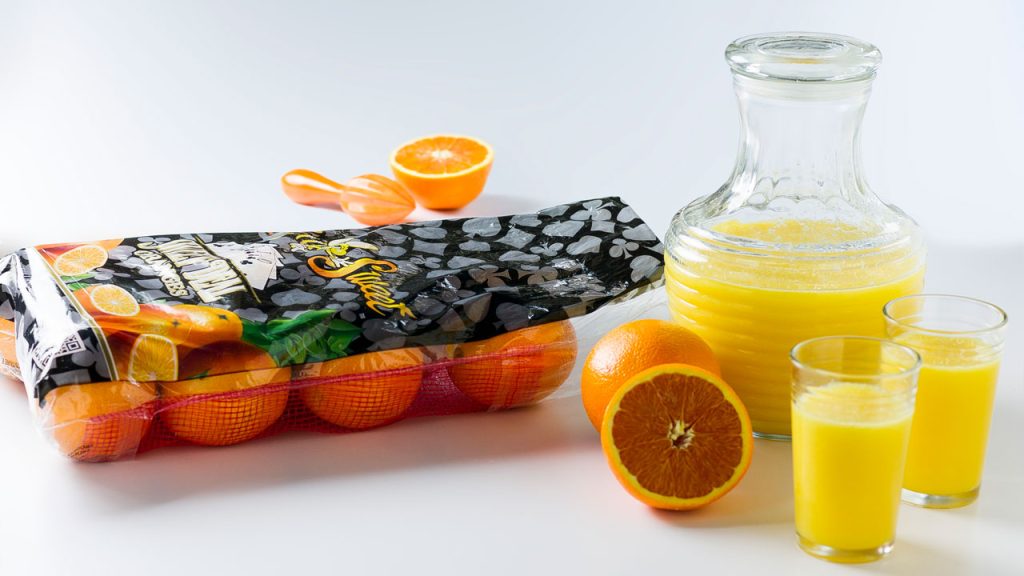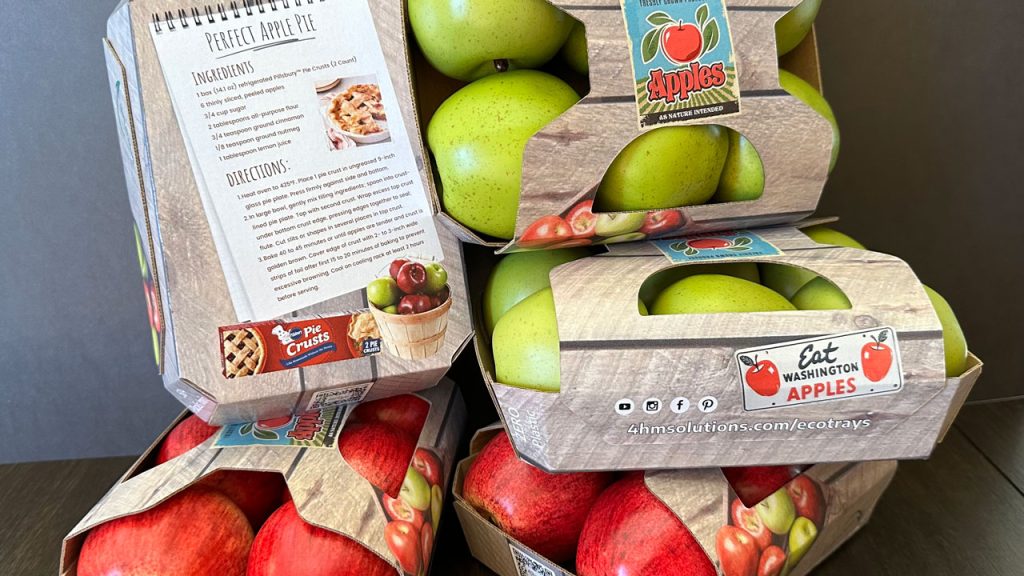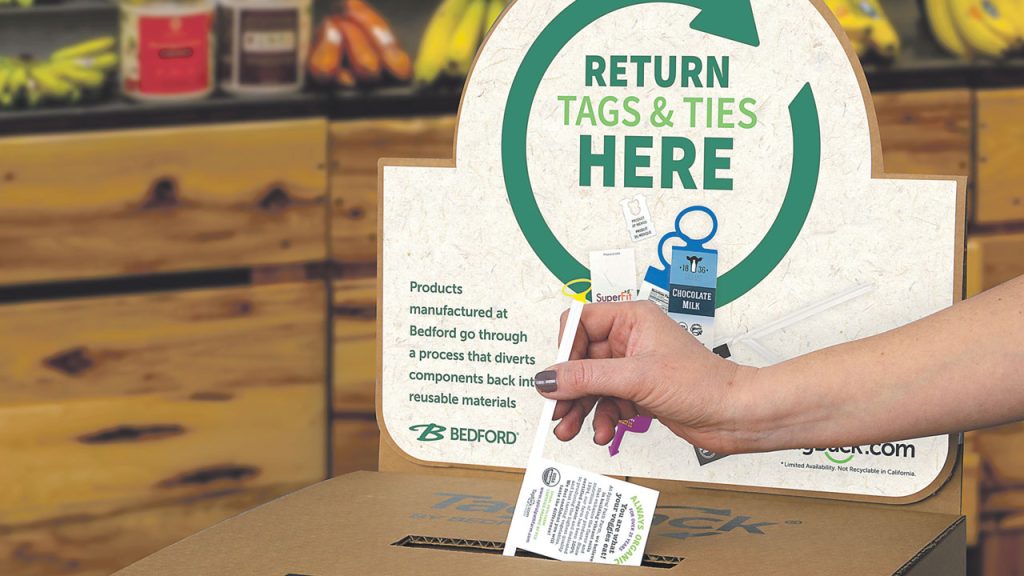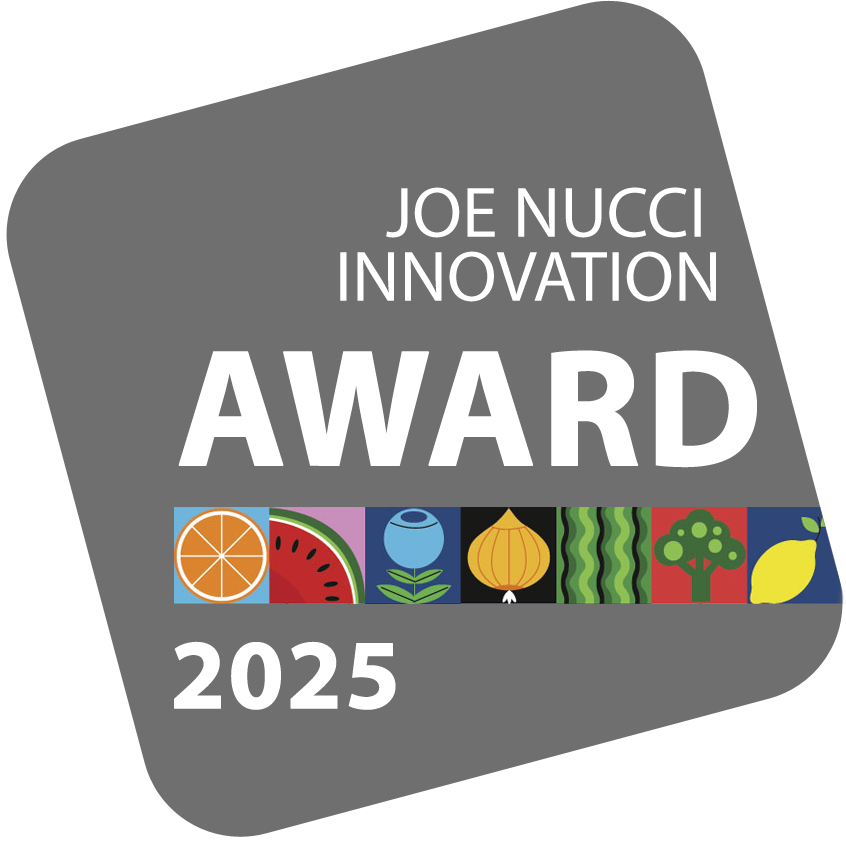The Produce Packaging Conundrum: Sustainability vs. Convenience
September 22, 2025 | 10 min to read
Innovations in fresh produce packaging are pushing the industry towards sustainability, driven by consumer demand and environmental concerns. With packaging accounting for 40% of plastic waste, companies like Stemilt Growers emphasize the need for materials that enhance visibility and shelf life while reducing environmental impact. Firms such as Fox Packaging and Bedford Industries focus on solutions that extend freshness without compromising safety. The drive for automation in packaging processes further supports efficiency, showing a balance between sustainability and practicality in modern produce packaging.

Alternatives to plastic must enhance visibility, shelf life and reduce shrink.
Effective fruit and vegetable packaging is a vital component in the supply chain. From harvesting to reaching supermarket shelves, packaging is needed not just to protect produce from damage, but also to limit moisture loss, extend shelf life, and enhance product visibility and marketing information.
However, consumer and retailer pressure for more sustainable produce packaging is driving change and innovation.
According to the OECD’s Global Plastics Outlook, published in 2022, packaging accounts for 40% of the world’s plastic waste, equivalent to an estimated 353 million tons. Concern about the plastic waste problem, combined with increasing consumer awareness of the importance of sustainability, is inspiring suppliers to develop ways to house fruits and vegetables that don’t compromise quality.
For Brianna Shales, marketing director at Wenatchee, WA-headquartered apple, pear and cherry producer-shipper Stemilt Growers, good packaging needs to be able to navigate the supply chain effectively, while maintaining quality and freshness.
At the same time, Shales says consumer-friendly visibility and functionality must be factored in, along with easy adaptability for automation to ensure packing efficiency.
Sustainability concerns about packaging requires what Shales calls a “balancing act” because of the many ways packaging impacts the environment.
“Plastic offers high visibility into our fruit, which is important for consumer purchase,” she says. “However, we can look at many elements of plastic packaging to improve it from an environmental standpoint. We also want to develop alternatives to plastic, and have launched a line of paper packages for apples and pears that sell on four counts instead of a fixed weight or by the pound.”
Shales says the paper packages have been especially helpful for retailers to distinguish and earn the premium ring on organic apples. “Overall, we keep a close eye on what retailers are looking at from a sustainability perspective and also continue to look and test different packaging options.”
DELIVERING INNOVATIONS
Located in Pharr, TX, Fox Packaging & Fox Solutions specializes in responsible packaging solutions that help extend shelf life, reduce product loss, and enhance product visibility, according to the company’s digital marketing coordinator, Aileen Hernandez.
These solutions — which include mesh and durable Leno bags, ranging from 5 pounds to oversized 50 pounds — are designed “to allow produce to breathe naturally, maintaining freshness from the field to the store,” Hernandez says. They also integrate seamlessly with automatic wicketed baggers and packing equipment.
“We design our packaging to meet the specific needs of fresh produce throughout the supply chain, from preventing bruising and blemishes to extending shelf life and enhancing shelf appeal,” says Hernandez. “For example, our stand-up bags and mesh combinations are engineered to hold products securely and distribute weight evenly, reducing damage during handling and transport.”
Fox also offers Combo Ultra Shield, packaging designed for light-sensitive products like potatoes, which cuts light exposure by over 70% compared to standard poly bags. Fox’s packaging also offers space for QR codes and tracking information.
Based in Worthington, MI, Bedford Industries manufactures produce ties and tags, as well as tag tying machinery, for a range of commodities. Recently, the company has begun offering new sizes of its ElastiTag brand, which closely mirror the size, functionality and price point of common rubber band tags.
Bedford’s marketing group manager, Belinda Heidebrink, says the new sizes are designed for smaller produce bunches, such as green onions, cilantro, parsley, dill, and other herb bunches. “The newer sizes address produce growers’ increased demand for U.S.-made products.”
Another newer tagging option is Bedford’s Tag Ties, which include two spools of material, comprising a twist tie and grower’s custom-printed tag.
According to Heidebrink, Bedford’s solutions help growers meet retailer requirements for traceability and barcode scanning, while “enhancing the appeal” of their produce and brand with high-quality graphics “that stay looking fresh throughout application, shipping, handling and merchandising.”
‘DIFFERENT BY DESIGN’
Another company combining sustainability and technology with innovation is Bradenton, FL-based 4HM Solutions. Head of sales and marketing, Chip Manuel, describes the firm as “different by design.”
“We don’t just follow trends, we address real gaps in the packaging and automation space. Every partnership is intentional,” he says. “We work only with clients, manufacturers, and retailers who are serious about sustainability.”
“We don’t just follow trends, we address real gaps in the packaging and automation space.”
Chip Manuel, 4HM Solutions, Bradenton, FL
According to Manuel, 4HM addresses the unique needs of the fresh produce industry through a mix of both packaging and equipment solutions. In the former case, he says the company’s packaging is focused on providing protection from crushing and blemishes, while at the same time helping extend product shelf life. 4HM, Manuel adds, also incorporates technology into its materials to provide improved tracking and transparency.

On the equipment side, he says the company offers automation solutions tailored to each client. This range of equipment will be expanded in the first quarter of 2026 with the launch of 4HM’s new FlexMesh lines, which Manuel calls “cutting-edge AI-driven sorting technology that fills a major gap in the jumbo category for small fruit market.”
CUTTING BACK ON PLASTICS
While ensuring extended shelf life and product visibility are key concerns, many packaging manufacturers have been just as active in their efforts to cut back on plastic.
According to Heidebrink, Bedford’s products use less plastic than many traditional packaging items, such as overwrap and clamshells. Citing a weight comparison, Heidebrink says the company’s PushTag offers a 76% plastic reduction when compared to cabbage overwrap, while its ElastiTag reduces plastic by 68% compared to vegetables wrapped in plastic.
Bedford also operates a program that turns its tags and ties into what Heidebrink describes as “beautiful recycled plastic lumber.” “Growers and consumers return our ties and tags to us by placing them in one of 250+ drop box locations or in the mail.”

Bedford sorts returns for reuse, turning viable materials into PolyScape recycled plastic lumber — a sustainable alternative to wood and steel. Other usable materials may be sold to recyclers, while the rest are efficiently disposed of, Heidebrink explains. “To date, we’ve collected more than 226,000 pounds of returns.”
Hernandez at Fox says sustainability is now just as much a focus for produce packagers as it is for the rest of the industry, adding that the company has taken steps to eliminate harmful materials from its packaging and is actively working to reduce plastic use through downgauging and material optimization.
“We’ve removed PFAS, also known as ‘forever chemicals,’ from 100% of our produce packaging,” she explains. “These substances were commonly used to make packaging resistant to water, oil, and heat, but growing research shows they can leach onto food and pose health risks. By eliminating them, we’re providing safer, PFAS-Free packaging that meets evolving regulations and supports both consumer safety and environmental responsibility.”
“The focus is on reducing plastic without sacrificing product protection,” Hernandez adds. “For fresh produce, that means using only what’s necessary to keep the product safe and fresh, no excess. Across the industry, there’s a growing emphasis on improving recyclability, exploring new materials, and finding solutions that make sense for each commodity.”
That said, sustainable packaging must also be functional, and Hernandez says Fox invests in research to look for alternatives to paper or compostable options, where susceptibility to moisture can often make them impractical for many fresh produce items.
“The produce industry needs solutions that reduce environmental impact but still protect the product,” adds Fox’s sustainability manager, Iliana Csanyi. “If packaging fails and food goes to waste, we’re not solving the bigger problem.”
• “The produce industry needs solutions that reduce environmental impact but still protect the product. If packaging fails and food goes to waste, we’re not solving the bigger problem.”
Iliana Csanyi, Fox Packaging & Fox Solutions, Pharr, TX
However, while the goal of cutting back on plastic is undoubtedly laudable, Shales at Stemilt says it also presents a challenge because plastic brings visibility to produce, as well as being more cost effective and efficient than many other packaging materials.
“We try to look at small changes when it comes to plastic, and all packaging,” she says. “Narrowing a box or bag can reduce materials, looking at different films that may have increased ability to recycle, and understanding the recycling capabilities throughout the country are all important.”
SUSTAINABILITY VERSUS CONVENIENCE
Sustainability isn’t the only trend influencing the direction of the produce packaging industry, and it’s easy to imagine clashes taking place with another major trend — convenience.
“People want packaging that’s easy to carry, store and use, while also expecting businesses to make responsible material decisions,” says Hernandez. At the same time, not all packaging works for every type of produce, she says, with different fruits and vegetables requiring different solutions to stay fresh.
An example Hernandez cites is apples, which typically work well in a poly bag that retains their moisture. On the other hand, she says limes work best in a mesh bag that lets air flow through and helps prevent too much moisture from building up.
Hernandez believes there is little doubt sustainability is driving change in fresh produce packaging, with retailers pushing for more recyclable, lower-impact packaging. “Shippers need solutions that work with their equipment, maintain product quality, and help them stay efficient,” Hernandez adds. “The reality is even the most sustainable option has to function in day-to-day operations.”
According to Manuel at 4HM, many of the barriers to improving sustainability — from cost and labor to automation and reliability — have finally been addressed, with pricing now more competitive, and automation more streamlined.
The result, he says, is that packaging can now offer improved fruit exposure, while at the same time including additional space for branding and messaging.
“There’s now a solution available that directly addresses many of the longstanding concerns with sustainable packaging — cost, efficiency, automation and product visibility,” Manuel says. In partnership with Italian equipment manufacturer Frutmac, 4HM has been able to implement forward-thinking packing facilities, which are gaining meaningful results.
ADDING AUTOMATION
But while sustainability and reducing plastic has taken much of the media attention, an equally important packaging trend has developed, largely away from the limelight, in the form of automation.
From a grower point of view, Shales says packaging automation is now crucial for Stemilt. “We have automation in bagging apples and pears and an automated distribution center,” she says. “We are planning for more automation to come in the packing process in the future, and really don’t develop a new package or box without future automation in mind.”
Heidebrink at Bedford says the need for reliable automation continues to grow. For its part, Bedford has developed an automated solution for applying produce identification to fresh produce bunches in fields or packing houses.
The company’s Tag Tyer, she explains, automatically applies TagTies to leek and green onion bundles. Bedford is working on adding additional commodities in the future.
Hernandez at Fox describes automation as more important than ever. “Through Fox Solutions, we help packing operations improve efficiency with equipment like our FSPB2 Pouch Bagger, which we’ve continuously developed since 2017,” she says. “This equipment reduces downtime during changeovers, meaning fewer people are needed to manage line changes, and production stays consistent, even with smaller crews.
“At the end of the day, automation isn’t just about replacing workers, it’s about making existing crews more productive and keeping operations running smoothly, even when staffing is tight,” says Hernandez.
14 of 23 article in Produce Business September 2025

